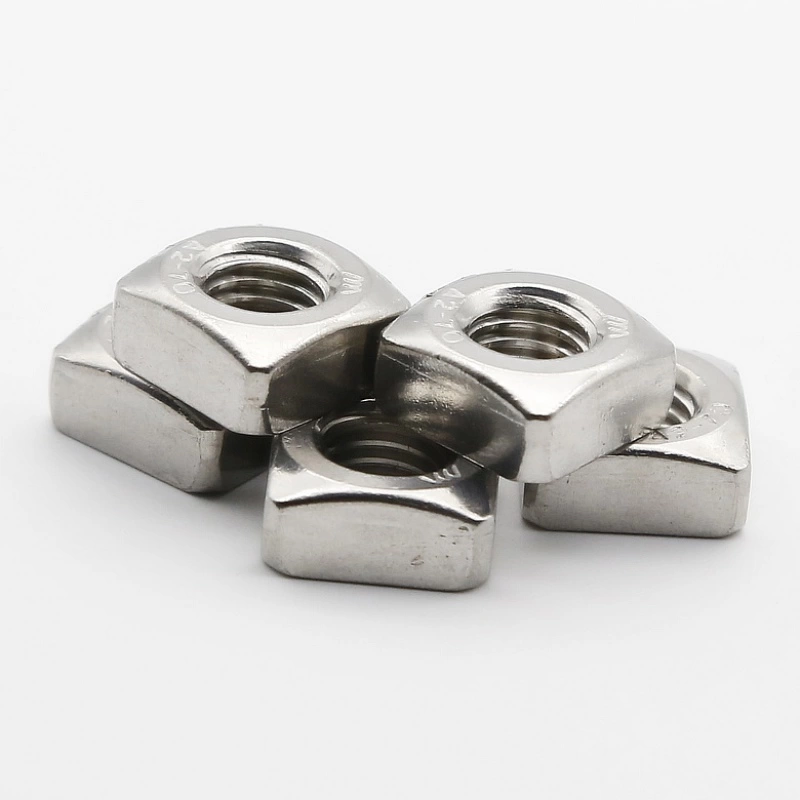

M20 Hex Nut Specifications and Applications for Various Industries and Projects
Aug . 20, 2024 14:58 Back to list
M20 Hex Nut Specifications and Applications for Various Industries and Projects
Understanding M20 Hex Nuts A Comprehensive Guide
In the world of hardware and fasteners, M20 hex nuts play a crucial role in ensuring the structural integrity of various applications. These components, often found in mechanical and construction projects, are vital for securing bolts and maintaining the strength of connections in assemblies. This article aims to delve into the specifics of M20 hex nuts, covering their specifications, materials, applications, and importance in engineering designs.
What is an M20 Hex Nut?
The term M20 refers to a metric measurement of the nut's thread diameter, which is 20 millimeters. Hex nuts are named for their hexagonal shape, which allows for easy gripping and torque application using standard wrenches. The “M” indicates that the nut conforms to the metric system, a common standard in many countries worldwide. Hex nuts are designed to pair with corresponding bolts, ensuring a secure fastening while allowing for quick assembly and disassembly.
Specifications of M20 Hex Nuts
M20 hex nuts typically have a standard thread pitch, which in this case is 2.5 mm. This means that for every complete rotation of the nut, it moves 2.5 mm along the bolt. The dimensions of an M20 hex nut are standardized, allowing manufacturers to produce components that are interchangeable among different brands.
In terms of standards, M20 hex nuts are often manufactured to specifications such as ISO 4032 or DIN 934. These standards ensure that the nuts meet specific requirements regarding dimensions, materials, and mechanical properties. Depending on the application, hex nuts might be available in various grades, with Grade 8 being a common choice for high-strength applications.
Materials Used in M20 Hex Nuts
M20 hex nuts are available in a variety of materials, each offering different properties suited for specific applications. The most common materials include
m20 hex nut

1. Carbon Steel Often coated with a layer of zinc for corrosion resistance, carbon steel hex nuts are widely used in construction and automotive industries.
2. Stainless Steel Known for its excellent corrosion resistance, stainless steel M20 hex nuts are ideal for outdoor applications and environments with high humidity, such as marine environments.
3. Brass Although less common, brass hex nuts are used for applications requiring electrical conductivity and resistance to corrosion while providing a unique aesthetic.
4. Plastic For specific uses, particularly in lightweight applications or where metal components could cause short circuits, plastic hex nuts made from durable polymers are employed.
Applications of M20 Hex Nuts
The versatility of M20 hex nuts makes them suitable for a wide range of applications. They are commonly used in automotive manufacturing, construction projects, machinery assembly, and even furniture. Some specific examples of their use include securing components in car engines, affixing structural elements in buildings, and assembling mechanical devices.
In construction, these hex nuts contribute to the stability of structural frameworks. In the automotive industry, M20 hex nuts secure critical components that must withstand high levels of stress and vibration. Their robustness provides peace of mind to engineers and builders, ensuring that structures and machines function safely and efficiently.
Conclusion
M20 hex nuts are essential fasteners in various engineering and construction applications, providing reliability and strength across multiple fields. Understanding their specifications, materials, and applications is crucial for anyone involved in design and assembly. By selecting the appropriate M20 hex nut for a given situation, engineers can enhance the safety and durability of their projects, paving the way for innovative designs that meet modern demands. As industries evolve, so too will the uses and technology surrounding hex nuts, reaffirming their indispensable role in mechanical and structural engineering.
Latest news
-
Hot Dip Galvanized Bolts-About LongZe|High Strength, Corrosion Resistance
NewsJul.30,2025
-
High-Strength Hot Dip Galvanized Bolts - Hebei Longze | Corrosion Resistance, Customization
NewsJul.30,2025
-
Hot Dip Galvanized Bolts-Hebei Longze|Corrosion Resistance&High Strength
NewsJul.30,2025
-
High-Strength Hot-Dip Galvanized Bolts-Hebei Longze|Corrosion Resistance&High Strength
NewsJul.30,2025
-
Hot Dip Galvanized Bolts-Hebei Longze|Corrosion Resistance&High Strength
NewsJul.30,2025
-
Hot Dip Galvanized Bolts - Hebei Longze | Corrosion Resistance, High Strength
NewsJul.30,2025

